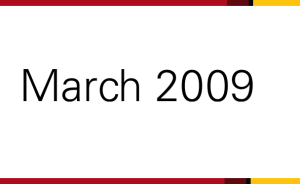The Gaza Crisis: Social Media, International Broadcasting, and Public Diplomacy
Summary: The Gaza crisis has once again highlighted the growing significance of public diplomacy and information campaigns during global conflicts. In 2006, Israel suffered a significant public diplomacy setback during its summer war with Hezbollah. In spite of a renewed focus and some notable improvements to its communication strategy, Israel has once again sustained a blow to its image, while Hamas’ popularity, among Palestinians in particular, has increased in the aftermath of the war.
Like the Russian-Georgian war in 2008, reporting about the Gaza conflict varied widely among different international broadcasters, with Arab and Western observers often witnessing vastly different accounts of the war. The Gaza conflict also saw the unprecedented use of social media by both Israel and Hamas, a development likely to be repeated and expanded in future conflicts.
__________________________________________________________________
Having suffered a significant defeat in the battle of public perceptions during the Hezbollah war in 2006, Israel made a concerted attempt to improve its communications effort going into the Gaza campaign. Even before the first bombs of the war were dropped in late December, 2008, the Israeli Foreign Ministry opened a new media center in Sderot, and prepared its media affairs personnel with press releases and talking points to try to help convey its message.
Following a reasonably successful public diplomacy effort in the earliest stages of the war, however, Israel began to lose traction as the images of carnage and destruction began to circulate out of Gaza, transmitted with particular intensity around the Arab world. Israel sustained further damage to its credibility following a decision to prohibit foreign journalists from entering Gaza. The policy came in response to reporting during the Hezbollah war which Israel believed had compromised or complicated some of its military operations. Still, the restriction heightened suspicions among some about Israel’s attempts to try to control the flow of information during the conflict.
For its part, Hamas sought to portray itself as a victim of Israeli aggression, maintaining a steady flow of images, delivered nearly instantaneously following Israeli attacks through its Al Qassam website and Al-Aksa television network, and subsequently picked up by other broadcasters. Reporting within the Arab world in particular evoked a surge of sympathy for Hamas, particularly on the Arab street. A poll conducted in early February by the Jerusalem Media and Communications Center confirms the consolidation of Hamas’ popularity among Palestinians. Strikingly, a majority of Palestinians believe Hamas won the war, and the poll indicates that if new elections were held today, Hamas would narrowly defeat Fatah, with support rising from 19% before the war to over 28% afterwards.
If anything, Hamas’ effort may have been tempered somewhat in the Arab world as a result of tepid support or even opposition from a number of Arab governments, including Egypt, Jordan, and Syria. While demonstrations of public support for Hamas materialized even in these nations, unlike past conflicts, certain Arab regimes avoided provoking further outrage among their populations.
Following a troubling trend witnessed during the Russian-Georgian war, reporting about the Gaza conflict varied widely as a result of divergent accounts from different international media networks. As Lawrence Pintak has recently described, Arab and Western viewers watched dramatically different wars unfolding before them, as a result of this kind of divergent reporting. This trend has only been accentuated lately by the rise of largely state-funded, international broadcasters reporting with a particular point of view, including Russia Today, France 24, Press TV, and most recently NHK from Japan.
Social media was employed by both sides during the Gaza war in unprecedented applications sure to be repeated and expanded in future conflicts. The Israeli government in particular conducted a Facebook, Twitter, and YouTube campaign to try to neutralize or expose some of the negative impressions and criticism which circulated widely on the web during recent conflicts. The Qassam count application on Facebook and the Israeli military’s development of a YouTube channel were particularly effective according to Jaron Gilinsky. Meanwhile, Hamas also set up a YouTube channel called “Palutube” to disseminate its message during the war, including criticism not only of its Israeli enemy but also of Fatah leader Mahmoud Abbas.
This media monitor tracked coverage of the Gaza crisis from its earliest stages beginning December 28, 2008 through March 1, 2009, with a focus on stories relevant to the public diplomacy of both Israel and Hamas, including public opinion, strategic communications, and the use of new media by both parties during the conflict. The monitor is divided into local coverage originating within the Middle East, and international coverage of the war by media outlets around the globe.
Most Read CPD Blogs
-
November 3
-
November 5
-
November 13
-
October 16
-
October 16
Visit CPD's Online Library
Explore CPD's vast online database featuring the latest books, articles, speeches and information on international organizations dedicated to public diplomacy.









Add comment